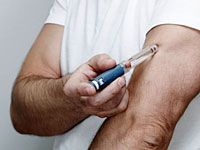Article
Prescription Opioid Abuse Often Leads to Injectable Drug Use and Increases HCV and HIV Risk
Author(s):
Nonmedical prescription opiate use is linked to the dramatic increase in heroin use from 2007 to 2012, according to a study from New York University's Center for Drug Use and HIV Research.

Nonmedical prescription opiate (PO) use is linked to the dramatic increase in heroin use from 2007 to 2012, according to a study led by New York University's Center for Drug Use and HIV Research (CDUHR).
Forty-six nonmedical PO users (aged 18 to 32) participated in semi-structured interviews conducted by Pedro Mateu-Gelabert, PhD, and his colleagues. Subjects were New York City residents and used opiates within 30 days prior to their interview. The results were published in the Journal of Substance Abuse Treatment.
To assess their HIV and Hepatitis C (HCV) transmission risk, researchers delved into the sexual and drug habits of participants. Additionally, they were asked about their escalation and origin of opioid use, drug networks, and their transition to heroin use and injection.
Despite PO being perceived as less addictive and dangerous, PO abuse often resulted in a long-term addiction to opiates and a conversion to heroin use, according to the researchers.
The interviewed heroin users who injected reported sharing syringes with users they saw as uninfected, as well as frequently sharing non-syringe injecting tools.
Furthermore, the investigators found that nonmedical PO users exhibited risky sexual behavior, including unprotected casual sex and having sex in exchange for drugs. Participants also admitted to having limited knowledge of HCV and HIV transmission associated with syringe use and safer practices.
In a statement from the university, Mateu-Gelabert, claimed the lower price of heroin and legislative restrictions put on opiates widely influenced nonmedical PO users’ transition to heroin.
“Despite indications that young PO misusers are at high risk of acquiring HIV and/or HCV through injection and sexual risk behaviors associated with drug use, little research has explored the social pathways by which PO misuse may lead to a heightened risk of infection,” Mateu-Gelabert said.
Based on their findings, the investigators are working to implement Staying Safe, a project incorporating HIV and HCV prevention methods that targets young injectors.



